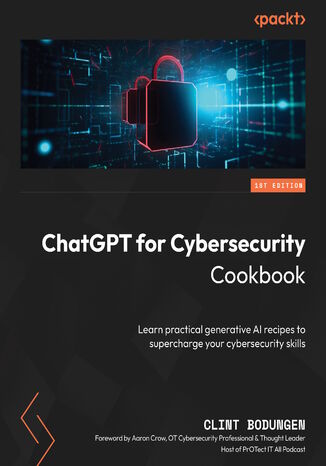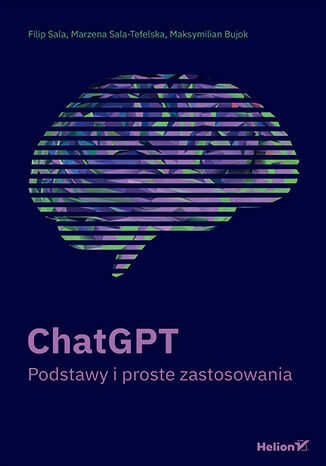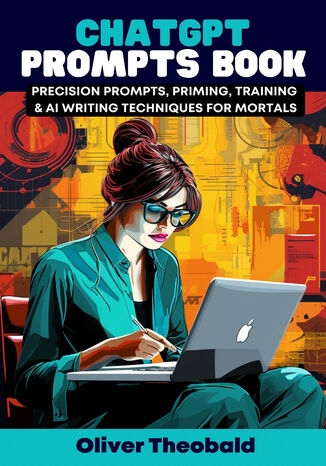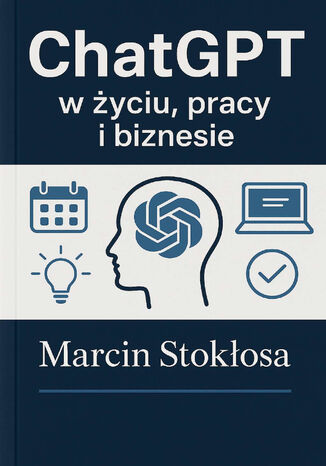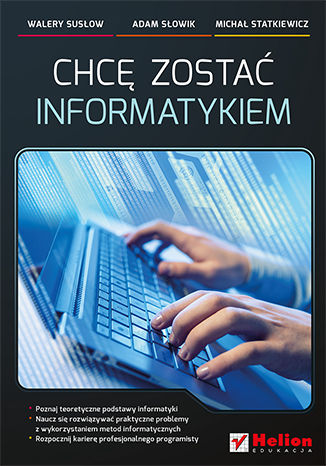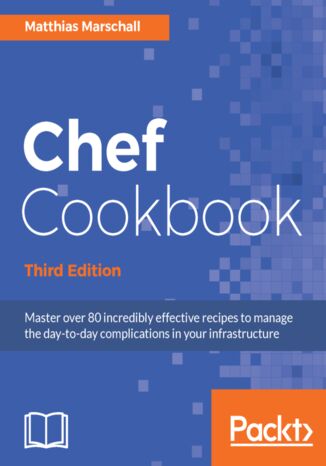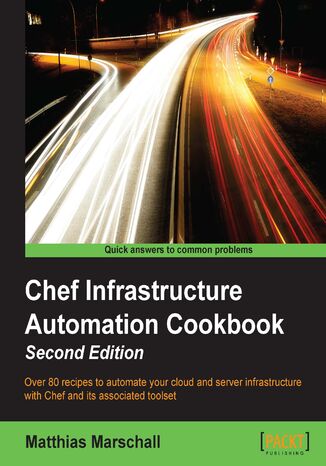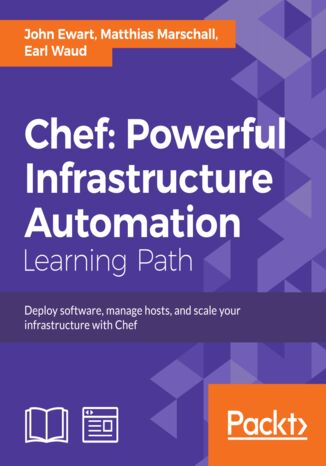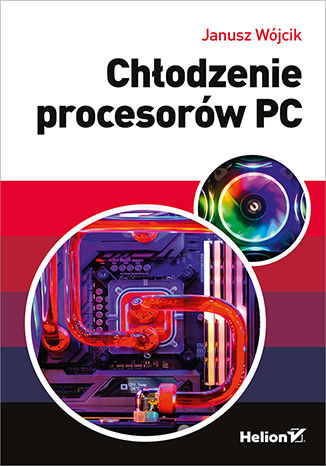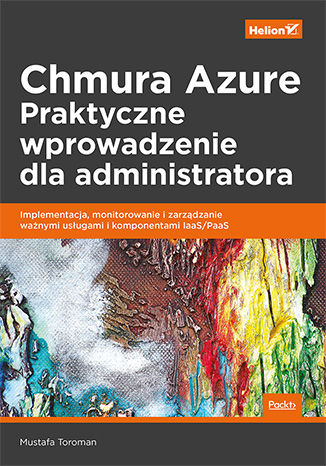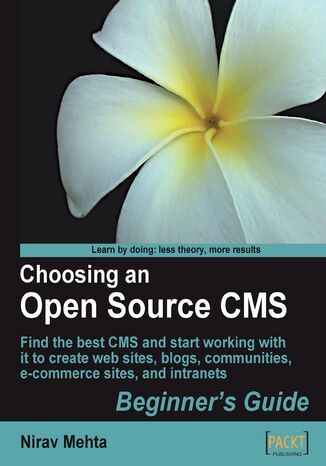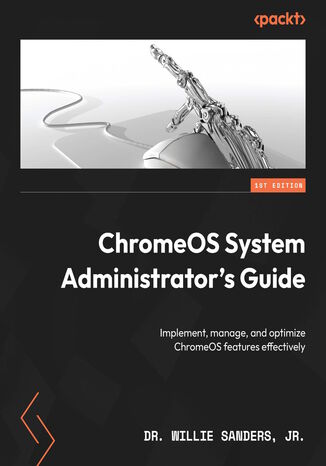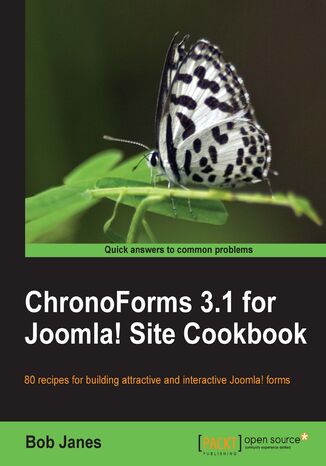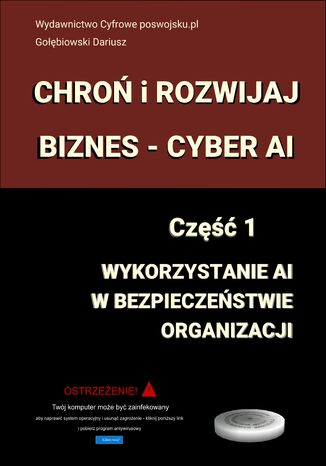Categories
Ebooks
-
Business and economy
- Bitcoin
- Businesswoman
- Coaching
- Controlling
- E-business
- Economy
- Finances
- Stocks and investments
- Personal competence
- Computer in the office
- Communication and negotiation
- Small company
- Marketing
- Motivation
- Multimedia trainings
- Real estate
- Persuasion and NLP
- Taxes
- Social policy
- Guides
- Presentations
- Leadership
- Public Relation
- Reports, analyses
- Secret
- Social Media
- Sales
- Start-up
- Your career
- Management
- Project management
- Human Resources
-
For children
-
For youth
-
Education
-
Encyclopedias, dictionaries
-
E-press
- Architektura i wnętrza
- Health and Safety
- Biznes i Ekonomia
- Home and garden
- E-business
- Ekonomia i finanse
- Esoterecism
- Finances
- Personal finance
- Business
- Photography
- Computer science
- HR & Payroll
- For women
- Computers, Excel
- Accounts
- Culture and literature
- Scientific and academic
- Environmental protection
- Opinion-forming
- Education
- Taxes
- Travelling
- Psychology
- Religion
- Agriculture
- Book and press market
- Transport and Spedition
- Healthand beauty
-
History
-
Computer science
- Office applications
- Data bases
- Bioinformatics
- IT business
- CAD/CAM
- Digital Lifestyle
- DTP
- Electronics
- Digital photography
- Computer graphics
- Games
- Hacking
- Hardware
- IT w ekonomii
- Scientific software package
- School textbooks
- Computer basics
- Programming
- Mobile programming
- Internet servers
- Computer networks
- Start-up
- Operational systems
- Artificial intelligence
- Technology for children
- Webmastering
-
Other
-
Foreign languages
-
Culture and art
-
School reading books
-
Literature
- Antology
- Ballade
- Biographies and autobiographies
- For adults
- Dramas
- Diaries, memoirs, letters
- Epic, epopee
- Essay
- Fantasy and science fiction
- Feuilletons
- Work of fiction
- Humour and satire
- Other
- Classical
- Crime fiction
- Non-fiction
- Fiction
- Mity i legendy
- Nobelists
- Novellas
- Moral
- Okultyzm i magia
- Short stories
- Memoirs
- Travelling
- Narrative poetry
- Poetry
- Politics
- Popular science
- Novel
- Historical novel
- Prose
- Adventure
- Journalism, publicism
- Reportage novels
- Romans i literatura obyczajowa
- Sensational
- Thriller, Horror
- Interviews and memoirs
-
Natural sciences
-
Social sciences
-
School textbooks
-
Popular science and academic
- Archeology
- Bibliotekoznawstwo
- Cinema studies
- Philology
- Polish philology
- Philosophy
- Finanse i bankowość
- Geography
- Economy
- Trade. World economy
- History and archeology
- History of art and architecture
- Cultural studies
- Linguistics
- Literary studies
- Logistics
- Maths
- Medicine
- Humanities
- Pedagogy
- Educational aids
- Popular science
- Other
- Psychology
- Sociology
- Theatre studies
- Theology
- Economic theories and teachings
- Transport i spedycja
- Physical education
- Zarządzanie i marketing
-
Guides
-
Game guides
-
Professional and specialist guides
-
Law
- Health and Safety
- History
- Road Code. Driving license
- Law studies
- Healthcare
- General. Compendium of knowledge
- Academic textbooks
- Other
- Construction and local law
- Civil law
- Financial law
- Economic law
- Economic and trade law
- Criminal law
- Criminal law. Criminal offenses. Criminology
- International law
- International law
- Health care law
- Educational law
- Tax law
- Labor and social security law
- Public, constitutional and administrative law
- Family and Guardianship Code
- agricultural law
- Social law, labour law
- European Union law
- Industry
- Agricultural and environmental
- Dictionaries and encyclopedia
- Public procurement
- Management
-
Tourist guides and travel
- Africa
- Albums
- Southern America
- North and Central America
- Australia, New Zealand, Oceania
- Austria
- Asia
- Balkans
- Middle East
- Bulgary
- China
- Croatia
- The Czech Republic
- Denmark
- Egipt
- Estonia
- Europe
- France
- Mountains
- Greece
- Spain
- Holand
- Iceland
- Lithuania
- Latvia
- Mapy, Plany miast, Atlasy
- Mini travel guides
- Germany
- Norway
- Active travelling
- Poland
- Portugal
- Other
- Przewodniki po hotelach i restauracjach
- Russia
- Romania
- Slovakia
- Slovenia
- Switzerland
- Sweden
- World
- Turkey
- Ukraine
- Hungary
- Great Britain
- Italy
-
Psychology
- Philosophy of life
- Kompetencje psychospołeczne
- Interpersonal communication
- Mindfulness
- General
- Persuasion and NLP
- Academic psychology
- Psychology of soul and mind
- Work psychology
- Relacje i związki
- Parenting and children psychology
- Problem solving
- Intellectual growth
- Secret
- Sexapeal
- Seduction
- Appearance and image
- Philosophy of life
-
Religion
-
Sport, fitness, diets
-
Technology and mechanics
Audiobooks
-
Business and economy
- Bitcoin
- Businesswoman
- Coaching
- Controlling
- E-business
- Economy
- Finances
- Stocks and investments
- Personal competence
- Communication and negotiation
- Small company
- Marketing
- Motivation
- Real estate
- Persuasion and NLP
- Taxes
- Social policy
- Guides
- Presentations
- Leadership
- Public Relation
- Secret
- Social Media
- Sales
- Start-up
- Your career
- Management
- Project management
- Human Resources
-
For children
-
For youth
-
Education
-
Encyclopedias, dictionaries
-
E-press
-
History
-
Computer science
-
Other
-
Foreign languages
-
Culture and art
-
School reading books
-
Literature
- Antology
- Ballade
- Biographies and autobiographies
- For adults
- Dramas
- Diaries, memoirs, letters
- Epic, epopee
- Essay
- Fantasy and science fiction
- Feuilletons
- Work of fiction
- Humour and satire
- Other
- Classical
- Crime fiction
- Non-fiction
- Fiction
- Mity i legendy
- Nobelists
- Novellas
- Moral
- Okultyzm i magia
- Short stories
- Memoirs
- Travelling
- Poetry
- Politics
- Popular science
- Novel
- Historical novel
- Prose
- Adventure
- Journalism, publicism
- Reportage novels
- Romans i literatura obyczajowa
- Sensational
- Thriller, Horror
- Interviews and memoirs
-
Natural sciences
-
Social sciences
-
Popular science and academic
-
Guides
-
Professional and specialist guides
-
Law
-
Tourist guides and travel
-
Psychology
- Philosophy of life
- Interpersonal communication
- Mindfulness
- General
- Persuasion and NLP
- Academic psychology
- Psychology of soul and mind
- Work psychology
- Relacje i związki
- Parenting and children psychology
- Problem solving
- Intellectual growth
- Secret
- Sexapeal
- Seduction
- Appearance and image
- Philosophy of life
-
Religion
-
Sport, fitness, diets
-
Technology and mechanics
Videocourses
-
Data bases
-
Big Data
-
Biznes, ekonomia i marketing
-
Cybersecurity
-
Data Science
-
DevOps
-
For children
-
Electronics
-
Graphics/Video/CAX
-
Games
-
Microsoft Office
-
Development tools
-
Programming
-
Personal growth
-
Computer networks
-
Operational systems
-
Software testing
-
Mobile devices
-
UX/UI
-
Web development
-
Management
Podcasts
- Ebooks
- Computer science
Computer science
Are you ready to unleash the potential of AI-driven cybersecurity? This cookbook takes you on a journey toward enhancing your cybersecurity skills, whether you’re a novice or a seasoned professional. By leveraging cutting-edge generative AI and large language models such as ChatGPT, you'll gain a competitive advantage in the ever-evolving cybersecurity landscape.ChatGPT for Cybersecurity Cookbook shows you how to automate and optimize various cybersecurity tasks, including penetration testing, vulnerability assessments, risk assessment, and threat detection. Each recipe demonstrates step by step how to utilize ChatGPT and the OpenAI API to generate complex commands, write code, and even create complete tools. You’ll discover how AI-powered cybersecurity can revolutionize your approach to security, providing you with new strategies and techniques for tackling challenges. As you progress, you’ll dive into detailed recipes covering attack vector automation, vulnerability scanning, GPT-assisted code analysis, and more. By learning to harness the power of generative AI, you'll not only expand your skillset but also increase your efficiency.By the end of this cybersecurity book, you’ll have the confidence and knowledge you need to stay ahead of the curve, mastering the latest generative AI tools and techniques in cybersecurity.
ChatGPT. Podstawy i proste zastosowania
Filip Sala, Marzena Sala-Tefelska, Maksymilian Bujok
Twój nowy, nad wyraz inteligentny współpracownik ChatGPT, czyli flagowy produkt firmy OpenAI, jest dziś na ustach wszystkich. Przyglądamy się dotychczasowym zastosowaniom sztucznej inteligencji, ale nasze myśli najbardziej zaprzątają przewidywania co do jej przyszłości. Autorzy udowadniają, że nie mamy się czego obawiać. Co więcej, pokazują, że najlepszym sposobem na pokonanie strachu przed nieznanym jest zrozumienie, czego się boimy. A możemy to osiągnąć dzięki praktycznym wskazówkom udzielonym w tej książce. Współpraca z ChatGPT wymaga pewnego przygotowania. Niewątpliwą zaletą tej technologii jest to, że można się z nią porozumieć za pomocą języka naturalnego ― takiego, jakim komunikujemy się ze sobą na co dzień. Rzecz w tym, by nauczyć się w odpowiedni sposób zadawać pytania i wydawać polecenia, czyli tworzyć tak zwane prompty. W trakcie lektury prześledzisz różne metody tworzenia zapytań i poznasz konkretne przykłady ich zastosowania. Dowiesz się między innymi, jak pracować z tekstem, grafiką i analizą danych, a także jak skorzystać z ChatGPT do celów dydaktycznych. Zrozumiesz również, jak sztuczna inteligencja może Cię wesprzeć w programowaniu i projektowaniu. Dzięki temu będziesz w stanie osiągnąć wszystkie cele, jakie sobie wyznaczasz ― i to zarówno w życiu osobistym, jak i zawodowym. Już dziś rozpocznij przygodę z ChatGPT! Książka jest przeznaczona przede wszystkim dla osób początkujących i tych, które ze sztuczną inteligencją nie miały dotychczas do czynienia. Zachęcamy również do odwiedzenia kanału naukowego Sala Science prowadzonego przez autorów na platformie YouTube.
The course embarks on an enlightening journey through the world of ChatGPT, starting from the very basics of understanding what ChatGPT is, to delving deep into the mechanics of crafting precision prompts that unlock its full potential. From the outset, you'll be introduced to the foundational elements that make ChatGPT an indispensable tool for a wide range of applications, setting the stage for a comprehensive exploration of its capabilities.As we progress, the course meticulously unfolds the layers of prompt writing techniques, priming strategies, and training methodologies that are designed to enhance your interaction with AI. You'll learn how to craft prompts for common use cases, navigate the nuances of content creation, translation tasks, and personalized tutoring, all while leveraging ChatGPT's advanced AI art capabilities.The course culminates by focusing on practical applications and exploring advanced prompt training and role prompting techniques. This final stretch is designed to solidify your understanding and empower you with the confidence to employ ChatGPT across various scenarios, from professional content writing to creative explorations.
ChatGPT w życiu, pracy i biznesie
ChatGPT to nie tylko chatbot - to osobisty asystent, organizator, edytor i pomysłodawca w jednym. Ten e-book pokazuje krok po kroku, jak korzystać z jego możliwości w praktyce: w codziennym życiu, zawodowo oraz w rozwoju własnych projektów. Znajdziesz tu ponad 50 gotowych promptów, checklisty, narzędzia, ćwiczenia i historie z życia. Niezależnie od tego, czy dopiero zaczynasz, czy już testujesz AI - ten przewodnik jest dla Ciebie. Marcin Stokłosa Pasjonat technologii, entuzjasta rozwiązań smart home i autor praktycznych poradników dla każdego, kto chce lepiej wykorzystywać nowoczesne narzędzia w życiu codziennym i zawodowym. Od ponad 10 lat mieszka w Niemczech, gdzie łączy pracę zawodową z własnymi projektami online. Tworzy treści edukacyjne, które tłumaczą złożone tematy prostym językiem - bez zbędnego żargonu i teorii. Jego celem jest pomagać zwykłym ludziom skutecznie korzystać z potencjału sztucznej inteligencji - w pracy, nauce, biznesie i domowych obowiązkach. W swoich materiałach stawia na konkret, klarowność i natychmiastową użyteczność.
Michał Statkiewicz, Adam Słowik, Walery Susłow
Poznaj teoretyczne podstawy informatyki Naucz się rozwiązywać praktyczne problemy z wykorzystaniem metod informatycznych Rozpocznij karierę profesjonalnego programisty Informatyka to niezwykle dynamicznie rozwijająca się dziedzina wiedzy. Komputery otaczają nas ze wszystkich stron: sterują pracą sprzętów gospodarstwa domowego, pośredniczą w komunikacji, a nawet umożliwiają eksplorację przestrzeni kosmicznej. Dzisiejszy świat trudno już właściwie wyobrazić sobie bez maszyn cyfrowych i kontrolującego je oprogramowania. Wciąż rośnie zapotrzebowanie rynku na wysokiej klasy specjalistów, którzy dzięki swojej wiedzy i dużemu doświadczeniu potrafią projektować, budować oraz programować systemy komputerowe. Popularność zawodu informatyka potęgują też wysokie zarobki, które zwiększają zainteresowanie młodzieży tą niełatwą dziedziną wiedzy. Jeśli interesujesz się informatyką, chcesz lepiej poznać jej podstawowe zagadnienia, nauczyć się rozwiązywać jej klasyczne problemy i analizować zadania informatyczne w sposób właściwy prawdziwym programistom, sięgnij po książkę Chcę zostać informatykiem. W przystępny sposób prezentuje ona matematyczne mechanizmy wykorzystywane w informatyce, uczy podstaw algorytmiki i wprowadza w świat programowania komputerów. Przedstawia zagadnienia związane z sieciami komputerowymi i bezpieczeństwem informacji oraz sposoby tworzenia gier komputerowych. Przede wszystkim zawiera jednak mnóstwo praktycznych przykładów i ciekawych zadań, które pomogą zainteresowanym kandydatom sprawdzić poziom swojej wiedzy i dostać się na studia informatyczne. Jeśli marzysz o karierze informatyka lub po prostu interesujesz się programowaniem i chcesz poszerzyć swoją wiedzę na ten temat, trafiłeś na właściwą książkę! Podstawy teoretyczne informatyki na skróty Ciekawe zadania informatyczne wraz z rozwiązaniami Matematyka, logika i algorytmika w informatyce Analiza podstawowych problemów programistycznych Wymiarowanie informacji i bezpieczeństwo danych Programowanie komputerów i sieci komputerowe Gry komputerowe Nie wahaj się! Zrób pierwszy krok, aby poznać sekrety informatyki!
Vladimir Yakovlev, Dameon D. Welch
Check Point firewalls are the premiere firewalls, access control, and threat prevention appliances for physical and virtual infrastructures. With Check Point’s superior security, administrators can help maintain confidentiality, integrity, and the availability of their resources protected by firewalls and threat prevention devices. This hands-on guide covers everything you need to be fluent in using Check Point firewalls for your operations.This book familiarizes you with Check Point firewalls and their most common implementation scenarios, showing you how to deploy them from scratch. You will begin by following the deployment and configuration of Check Point products and advance to their administration for an organization. Once you’ve learned how to plan, prepare, and implement Check Point infrastructure components and grasped the fundamental principles of their operation, you’ll be guided through the creation and modification of access control policies of increasing complexity, as well as the inclusion of additional features. To run your routine operations infallibly, you’ll also learn how to monitor security logs and dashboards. Generating reports detailing current or historical traffic patterns and security incidents is also covered.By the end of this book, you'll have gained the knowledge necessary to implement and comfortably operate Check Point firewalls.
Chef Cookbook. Achieve powerful IT infrastructure management and automation - Third Edition
Chef is a configuration management tool that lets you automate your more cumbersome IT infrastructure processes and control a large network of computers (and virtual machines) from one master server. This book will help you solve everyday problems with your IT infrastructure with Chef. It will start with recipes that show you how to effectively manage your infrastructure and solve problems with users, applications, and automation. You will then come across a new testing framework, InSpec, to test any node in your infrastructure.Further on, you will learn to customize plugins and write cross-platform cookbooks depending on the platform. You will also install packages from a third-party repository and learn how to manage users and applications. Toward the end, you will build high-availability services and explore what Habitat is and how you can implement it.
Matthias Marschall, John Ewart, Earl Waud
Chef is a configuration management tool that turns IT infrastructure into code. Chef provides tools to manage systems at scale. This learning path takes you on a comprehensive tour of Chef's functionality, ranging from its core features to advanced development. You will be brought up to speed with what's new in Chef and how to set up your own Chef infrastructure for individuals, or small or large teams. You will learn to use the basic Chef command-line tools. We will also take you through the core concepts of managing users, applications, and your entire cloud infrastructure. You will learn the techniques of the pros by walking you through a host of step-by-step guides to solve real-world infrastructure automation challenges.You will learn to automate and document every aspect of your network, from the hardware to software, middleware, and all your containers. You will become familiar with the Chef'sProvisioning tool. By the end of this course, you will be confident in how to manage your infrastructure, scale using the cloud, and extend the built-in functionality of Chef itself.The books used in this Learning Path are:1) Chef Essentials2)Chef Infrastructure Automation Cookbook – Second Edition3)Mastering Chef Provisioning
Chłodzenie procesorów PC bez tajemnic Komputery osobiste, stacje robocze i serwery zużywają w czasie pracy dużo energii elektrycznej, emitując przy tym sporo ciepła. Znaczna jego część jest wydzielana przez procesory, które są coraz szybciej taktowane i wyposażane w coraz większą liczbę rdzeni. Zbyt wysoka temperatura wewnątrz jednostek centralnych powoduje zmniejszenie stabilności pracy i szybsze zużycie podzespołów, a w konsekwencji pogorszenie wydajności i zwiększenie awaryjności. Dlatego tak istotne jest wprowadzanie technik efektywnego chłodzenia elementów elektronicznych i ciągłe poszukiwanie nowych rozwiązań w ramach badań w tym zakresie. Książka jest przeznaczona dla osób zainteresowanych zgłębieniem aktualnej wiedzy na temat dostępnych technik chłodzenia procesorów komputerowych. Autor przedstawia teoretyczne podstawy zjawisk związanych z wymianą ciepła w elementach elektronicznych - prezentuje stosowane w tym zakresie modele i metody, szczegółowo opisuje badania nad chłodzeniem wykorzystującym powietrze, wodę i nanopłyny, a także omawia możliwości zwiększenia wydajności wymiany ciepła przy użyciu innych technik. To obowiązkowa pozycja dla każdego, kto zawodowo zajmuje się tą tematyką. Modele i metody używane w badaniach nad chłodzeniem procesorów Badania nad chłodzeniem procesorów przy użyciu powietrza Badania nad chłodzeniem z wykorzystaniem cieczy, w tym nanopłynów Historia i nowe techniki chłodzenia procesorów komputerowych
Decyzja o przeniesieniu zasobów informatycznych do chmury jest podejmowana najczęściej wtedy, gdy niezawodność i bezpieczeństwo systemu są dla firmy sprawą kluczową. Jeśli chodzi o rozwiązania oparte na chmurze obliczeniowej, warto zainteresować się Azure. Azure udostępnia takie usługi, by umożliwić rozbudowę i monitorowanie aplikacji, baz danych czy innych usług oraz zarządzanie nimi w sposób globalny. Pozwala na ciągłe dostarczanie znakomitych, innowacyjnych rozwiązań. Umożliwia wirtualizację rozmaitych systemów, takich jak Windows, Linux, dystrybucje serwerowe, strony WWW, aplikacje ASP .NET, systemy CMS, bazy danych czy rozproszone klastry obliczeniowe. Oto praktyczne wprowadzenie do Azure. Wyjaśniono tu wiele pojęć potrzebnych w pracy administratora, takich jak sieci wirtualne oraz koncepcja IaaS. Omówiono zasady pracy z Azure oraz pokazano, jak można przygotować platformę do wdrożenia własnego systemu. Od strony praktycznej przedstawiono tworzenie zaawansowanych usług w platformie Azure. Sporo miejsca poświęcono najważniejszym kwestiom bezpieczeństwa i administracji, zaprezentowano też szereg dobrych praktyk, a także sporo technik ułatwiających rozwiązywanie najczęstszych problemów. Książka jest napisana w zwięzły i przystępny sposób. Dzięki niej szybko i skutecznie zaczniesz administrować zasobami w chmurze Azure. W tej książce między innymi: podstawowe pojęcia, koncepcje i modele związane z chmurą obliczeniową tworzenie i konfiguracja wirtualnej maszyny Azure praca z bazami danych, usługi IaaS i PaaS usługi hybrydowe, implementacja i zarządzanie tożsamość i bezpieczeństwo zasobów w chmurze Azure Chmura Azure: przenieś swój system na wyższy poziom!
Chmura obliczeniowa. Rozwiązania dla biznesu
Jothy Rosenberg, Arthur Mateos
Odkryj wielką moc chmur obliczeniowych i potencjał, jaki kryją w sobie! Co to jest chmura obliczeniowa? Kiedy korzystać z chmur, a kiedy ich unikać? Jak oszacować koszty korzystania z chmury obliczeniowej? Jeszcze parę lat temu udostępnienie dużej, popularnej aplikacji wiązało się z ogromnymi wydatkami na infrastrukturę. Konieczne było posiadanie własnej serwerowni, wynajmowanie przestrzeni w centrum danych lub uciekanie się do innych kosztownych rozwiązań. W tej chwili na zawołanie można otrzymać dokładnie tyle mocy obliczeniowej i przestrzeni dyskowej, ile w danej chwili jest potrzebne. Zmartwienia związane z nagłymi i chwilowymi wzrostami obciążenia odeszły na zawsze, a dostępność Twoich aplikacji na poziomie bliskim 100% przez okrągły rok jest w zasięgu ręki. Jak to możliwe? Książka ta wprowadzi Cię w świat, jakiego nie znałeś. Dowiesz się, czym są chmury obliczeniowe, kiedy z nich korzystać i co w nich umieszczać. Poznasz obecnych na rynku dostawców i ich platformy: Google App Engine, Amazon EC2, Windows Azure oraz Salesforce.com i Force.com. Każda z nich ma swoje mocne i słabe strony oraz sprawdza się najlepiej w innych rozwiązaniach. Po lekturze tej książki bezbłędnie wybierzesz najlepsze z nich - idealnie dopasowane do Twoich potrzeb. W kolejnych rozdziałach autorzy poruszają kwestie związane z bezpieczeństwem w chmurze, omawiają najlepsze wzorce dla aplikacji w niej działających oraz sposoby szacowania kosztów przechowywania danych. Znajdziesz tu też sposoby prowadzenia testów i wdrażania aplikacji w chmurach. Chmury obliczeniowe są przyszłością świata informatyki - głównie w sferze biznesu. Nie pozostawaj w tyle i już dziś sięgnij po kompendium, które otworzy przed Twoją firmą nowe możliwości! Zasady definiujące przetwarzanie danych w chmurze Historia chmur obliczeniowych i ich klasyfikacja Najnowsze technologie, najwięksi dostawcy, najlepsze praktyki Kiedy korzystać z chmury, a kiedy jej unikać Tworzenie skalowalnych i niezawodnych aplikacji w chmurze Przenoszenie do chmury istniejących aplikacji i infrastruktury Niezawodność i bezpieczeństwo chmur obliczeniowych Testy, wdrożenia i działanie w chmurze Wyjdź naprzeciw nowym technologiom i przenieś swój biznes do chmury!
There are many powerful open source CMSs available to take the pain away from managing a web site. These systems are feature rich, often easy to use, and free. Unfortunately, there are so many choices it's tough to be sure you're choosing the right one. How can you be sure that you are selecting and working with the right tool?This book will guide you through choosing the right CMS for your needs. You can be confident in your choice of CMS for the needs of your project. It will also help you make a start using the CMS, and give you a feel for what it's like to use it ñ even before you install it yourself.Are you bewildered by the many open source CMSs available online? Open source CMSs are the best way to create and manage sophisticated web sites. You can create a site that precisely meets your business goals, and keep the site up to date easily because these systems give you full control over every aspect of your site. Because open source CMSs are free to download, you have a huge amount of choice between the various systems.Yet there are many open source CMSs to choose from, each with unique strengths ñ and occasionally limitations too. Choosing between the bewildering number of options can be tough.Making the wrong choice early on may lead to a lot of wasted work, because you'll have a half-finished site that doesn't meet your initial requirements ñ and needs to be restarted from scratch.This book will show you how to avoid choosing the wrong CMS. It will guide you through assessing your site requirements, and then using that assessment to identify the CMS that will best fit your needs. It contains discussions of the major CMSs, and the issues that you should consider when choosing: their complexity to use, their features and the power they offer. It discusses technical considerations such as programming languages and compliance with best practice standards in a clear, friendly way that non-technical readers can understand.The book also contains quick-start guides and examples for the most popular CMSs such as WordPress, Joomla!, and Drupal, so that you can experiment with these CMSs, get a feel for how they work, and start using them to build your site.After reading this book, you can be confident that your CMS choice will support your web site's needs because you have carefully assessed your requirements and explored the available options.
ChromeOS System Administrator's Guide. Implement, manage, and optimize ChromeOS features effectively
Google's ChromeOS provides a great platform for technicians, system administrators, developers, and casual users alike, providing a seemingly simplistic architecture that is easy enough for a novice user to begin working with. However, beneath the surface, this operating system boasts a plethora of powerful tools, able to rival any other OS on the market. So, learning how to harness the full potential of the OS is critical for you as a technical worker and user to thrive at your workplace. ChromeOS System Administrator’s Guide will help you reap the benefits of all features of ChromeOS.This book explains ChromeOS’ unique architecture and its built-in tools that perform essential tasks such as managing user accounts, working with data, and launching applications. As you build your foundational knowledge of the OS, you'll be exposed to higher-level concepts such as security, command line, and enterprise management.By the end of this book, you’ll be well-equipped to perform a range of system administration tasks within ChromeOS without requiring an alternative operating system, thereby broadening your options as a technician, system administrator, developer, or engineer.
Joomla! is a fantastic way to create a dynamic CMS. Now you want to go to the next step and interact with your users. Forms are the way you ask questions and get replies. ChronoForms is the extension that lets you do that and this book tells you how.From building your first form to creating rich form based applications we will cover the features that ChronoForms offers you in a clear hands-on way. Drawing on three years daily experience using ChronoForms and supporting users there is valuable help for new users and experienced developers alike.We will take you through form development step by step: from creating your first form using ChronoForms’ built-in drag-and-drop tool; validating user input; emailing the results; saving data in the database, showing the form in your Joomla! site and much more.Each chapter addresses a topic like ‘validation’ or ‘email’ and the recipes in the chapter each address a different user question from the beginners’ question ‘How do I set up an email?’ through to more advanced questions like using some PHP to create a custom email Subject line.Over eight chapters and eighty recipes we cover all of the ‘Frequently Asked Questions’ that new users and developers have about using ChronoForms. The recipe structure allows you to pick and choose just the solution that you need.
CHROŃ I ROZWIJAJ BIZNES - CYBER AI Część 1 Wykorzystanie AI w bezpieczeństwie organizacji
Masz firmę, fundację, albo inną organizację, którą chcesz ochronić przed cyberzagrożeniami? Świetnie, bo właśnie trzymasz wirtualną broń do walki z cyfrowymi złoczyńcami! Pierwsza część serii "CHROŃ I ROZWIJAJ BIZNES - CYBER AI" to Twoje kompendium wiedzy o tym, jak nie tylko wywinąć się z rąk hakerów, ale też sprytnie wdrożyć sztuczną inteligencję, która pomoże Ci spać spokojnie... no, przynajmniej dopóki AI nie zacznie przejmować kontroli nad światem. 😉 W tej książce dowiesz się, dlaczego malware to coś więcej niż problem komputera wujka Janka, jak unikać pułapek phishingowych, które są bardziej podstępne niż zaproszenie na "darmową pizzę", oraz dlaczego dyrektywa NIS 2 nie jest tylko kolejnym nudnym prawniczym dokumentem, który gdzieś tam podpisano. A teraz najlepsza część: sztuczna inteligencja (tak, ta od filmów sci-fi!) może być Twoim najlepszym przyjacielem w walce z zagrożeniami. Dzięki AI Twój system zabezpieczeń będzie niczym Sherlock Holmes, który znajdzie każdą podejrzaną aktywność, zanim jeszcze pomyślisz o kawie. W książce znajdziesz konkretne przykłady, jak AI może ochronić Twoje dane, monitorować pracowników (bez robienia z tego kolejnego odcinka live-streaam badziewnych seriali dla samotnych ludzi) i automatyzować reakcje na zagrożenia. Jeśli myślisz, że to koniec... to niespodzianka! Druga część serii, zaplanowana na przyszły rok, będzie o tym, jak sztuczna inteligencja nie tylko ochroni Twoją organizację, ale także pomoże Ci ją rozwijać - kto wie, może nawet stworzy dla Ciebie plan na podbój świata (w granicach prawa, oczywiście). Nie przegap okazji, żeby zabezpieczyć swój biznes przed zagrożeniami, które krążą w sieci szybciej niż memy z kotami. Zrób to z uśmiechem i nutą technologicznej magii!

